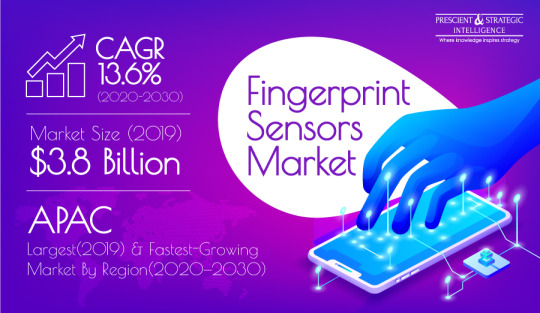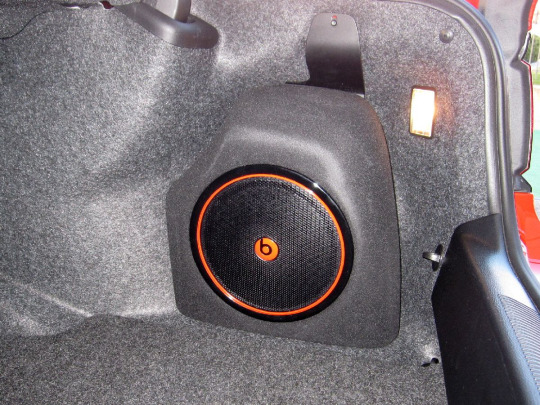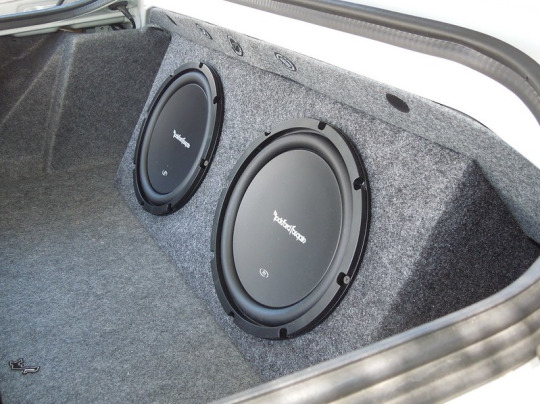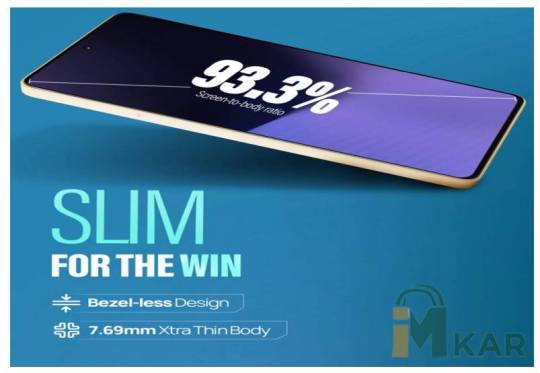#Fingerprint Sensor Market
Explore tagged Tumblr posts
Text







Can you spot the difference? 🤔💬 These identical twins share the same DNA,👬 🧬 but NOT the same fingerprints!🖐🏻 Think you know why? Swipe ➡️ through this post to know the answer! Share your guesses in the comments below!
#science#science facts#education#discover#study blog#scicomm#explore#research scientist#scifi#cool science#scientist#mad scientist#scientific illustration#science fantasy#body#fingertips#fingerprint recognition#fingerprint lock#fingerprint scanner#fingerprint sensor market#unique#best physio#physiology#simps for science
5 notes
·
View notes
Text
fingerprint sensor market Size, Share, Trends, Opportunities and Industry Growth Analysis The rise in number of identity threats is one of the key factors leading to emergence of fingerprint technologies. Identity theft refers to the illegal acquisition of an individual's personal or financial details to perpetrate fraud, including unauthorized transactions. It occurs through various methods and inflicts harm on victims' credit, finances, and reputation.
1 note
·
View note
Text
Global Fingerprint Sensor Market Size, Share, Demand & Trends 2031

The Global Fingerprint Sensor Market size was estimated at USD 4.54 billion in 2022 and is expected to hit around USD 12.71 billion by 2031, poised to grow at a compound annual growth rate (CAGR) of 11.32% from 2022 to 2031.
The landscape of biometric technology, specifically fingerprint sensors, has witnessed significant growth, leading to the evolution of the global fingerprint sensor market. Fingerprint sensors serve as a crucial component in various security applications, offering a reliable and convenient method for user authentication. These sensors are integral to ensuring secure access to devices, data, and systems, playing a pivotal role in modern security protocols.
The demand for fingerprint sensors has surged in recent years, driven by the increasing emphasis on data security, identity verification, and the widespread adoption of biometric authentication across diverse industries. With the proliferation of smartphones, laptops, and other smart devices, fingerprint sensors have become ubiquitous, providing a seamless and secure means of unlocking devices and accessing sensitive information.
As digitalization continues to transform industries, the global fingerprint sensor market has experienced a surge in demand, fueled by the growing need for robust authentication solutions. Fingerprint sensors offer a biometric identification method that is not only convenient but also difficult to replicate, enhancing the overall security posture of systems and applications.
Key market players are responding to the evolving needs of businesses and consumers by introducing advanced fingerprint sensor technologies. These innovations include improvements in sensor accuracy, faster recognition speeds, and integration with other emerging technologies such as artificial intelligence (AI) and the Internet of Things (IoT). The integration of AI algorithms into fingerprint sensors enhances pattern recognition, contributing to more reliable and adaptive authentication mechanisms.
In addition to advancements in technology, the market is witnessing a notable trend towards the integration of fingerprint sensors into a variety of devices beyond traditional smartphones and laptops. Sectors such as finance, healthcare, and automotive are increasingly incorporating fingerprint sensors for secure access and identity verification, driving the expansion of the market into new applications.
Security remains a paramount concern, and fingerprint sensor manufacturers are responding by enhancing the security features of their products. Encryption, anti-spoofing technologies, and liveness detection mechanisms are being integrated into fingerprint sensors to safeguard against unauthorized access and address emerging threats in the cybersecurity landscape.
Furthermore, the global fingerprint sensor market is experiencing a shift towards touchless biometric solutions in response to health and hygiene considerations. Contactless fingerprint sensors, utilizing advanced imaging and recognition technologies, are gaining prominence, especially in public spaces and high-traffic environments.
Download Free Sample Report
Recent Developments:
Recent advancements in the global fingerprint sensor market include the incorporation of 3D sensing technologies, enabling more accurate and secure fingerprint recognition. Manufacturers are focusing on enhancing the overall user experience by developing sensors that are not only secure but also user-friendly and adaptable to various environmental conditions.
The market is also witnessing increased collaboration between fingerprint sensor manufacturers and software developers to create seamless and integrated solutions. These collaborations aim to provide end-users with a comprehensive and secure biometric authentication experience, further driving the widespread adoption of fingerprint sensors across industries.
As the global fingerprint sensor market continues to evolve, the integration of cutting-edge technologies, emphasis on security, and expansion into diverse applications are expected to shape its trajectory, meeting the growing demand for reliable and convenient biometric authentication solutions.
Market Segmentation:
Market Breakup: By Type Touch Swipe Area
Market Breakup: By Sensor Technology Optical Sensor Capacitive Sensor Thermal Sensor Ultrasonic Sensor
Market Breakup: By Application Mobile Devices Consumer Electronics Travel and Immigration Government and Law Enforcement Military and Defense Banking and Finance Commercial Healthcare Residential
Market Breakup: By Material Optical Prism Piezoelectric (PMUT) Pyroelectric Adhesive
Regional Analysis The size and scope of the global Fingerprint Sensor Market vary by region and are important and expanding. Below is a quick summary of the market’s regional analysis:
North America: The widespread adoption of biometric technologies and the increasing emphasis on enhancing security across various industries are propelling the robust growth of the global fingerprint sensor market. North America, being at the forefront of technological advancements, exhibits a high acceptance rate for fingerprint sensor technologies. The region’s mature technical infrastructure, especially in the United States, drives continuous innovation in fingerprint sensor applications. Security remains a paramount concern, and businesses prioritize cutting-edge fingerprint sensor solutions to stay competitive. The dynamic market in North America is marked by a strong ecosystem of IT services and a growing demand for scalable, efficient, and secure fingerprint sensor solutions.
Europe: The fingerprint sensor market in Europe is characterized by a diverse landscape, with varying levels of technological advancement across nations. Leading economies such as Germany and the United Kingdom are pioneers in adopting the latest fingerprint sensor technologies. Strict data protection regulations influence market dynamics, pushing businesses to prioritize security features in fingerprint sensor selection. Additionally, there is a notable shift towards sustainable and energy-efficient fingerprint sensor solutions, aligning with the region’s growing emphasis on environmental consciousness.
Asia-Pacific: The Asia-Pacific region emerges as a key growth area for the global fingerprint sensor market, driven by rapid industrialization and a strong push towards digital transformation. Countries like China, India, and Japan are at the forefront of implementing cutting-edge fingerprint sensor technologies as their IT infrastructures expand. Diverse preferences for biometric solutions, including fingerprint sensors, cloud-based deployments, and customization to address specific regional needs, contribute to the dynamic market landscape. The adoption of fingerprint sensors is on the rise in response to the increasing demand for secure authentication in mobile applications, financial transactions, and identity verification.
South America: The fingerprint sensor market in South America is characterized by a mix of burgeoning startup environments and well-established businesses. Businesses in countries like Brazil and Argentina are increasingly adopting fingerprint sensor technologies to modernize their security measures. Affordability, adherence to governmental regulations, and economic stability play crucial roles in shaping the market. There is a growing focus on fingerprint sensor solutions that offer not only security but also scalability and interoperability with emerging technologies, reflecting the region’s ongoing digitalization efforts.
Middle East and Africa: The Middle East and Africa are witnessing steady growth in the fingerprint sensor market as the region continues to invest in robust IT infrastructure. Countries like South Africa and the United Arab Emirates lead in the adoption of advanced fingerprint sensor technologies to support their developing economies. Factors such as a burgeoning population, increasing internet penetration, and the demand for efficient data management solutions drive the market. Cloud-based fingerprint sensor solutions are gaining traction, and there is a notable emphasis on cybersecurity capabilities to address emerging threats and ensure the competitiveness of businesses in the region.
Market Breakup By Region North America Europe Asia Pacific Latin America Middle East and Africa
Competitive Landscape The Fingerprint Sensor Market competitive landscape provides details by competitor. Details included are company outline, company financials, revenue generated, market potential, investment in research and development, new market initiatives, worldwide occurrence, production sites and facilities, production capacities, company strengths and weaknesses, product launch, product width and breadth, application dominance. The overhead data points providing are only related to the businesses’ focus related to Fingerprint Sensor marketplace.
Contact Us: Mob : +91 9319642100 Noida One Tower Sec 62 Noida 201301 Sales : [email protected] Website : https://www.organicmarketresearch.com
0 notes
Text
#Fingerprint Sensor Market#Fingerprint Sensor Market size#Fingerprint Sensor Market share#Fingerprint Sensor Market trends#Fingerprint Sensor Market analysis#Fingerprint Sensor Market forecast#Fingerprint Sensor Market outlook
0 notes
Text
The Secrets of Fingerprint Scanner Failures

Fingerprint scanners are like the locks on your digital devices, and your fingerprint is the key. They were introduced a long time ago, back in the late 19th century. It is the best way to keep your phone, computer, or even some doors safe.
But sometimes, these fingerprint scanners do not work. But sometimes it was a failure. We don’t always know why. It could be because your finger is wet, or there is dust on the scanner, or maybe your finger is not in the right position.
So, the mystery of fingerprint scanner failures is all about understanding why they sometimes do not work and finding ways to make them work better. It is like solving a little puzzle to keep your digital information safe.
Read More About: https://watchurday.com/the-secrets-of-fingerprint-scanner-failures/
#fingerprint scanner#fingerprint lock#fingerprintlock#fingerprint sensor market#technology#digital devices
1 note
·
View note
Text
Fingerprint sensors are utilized in biometric fingerprint scanners and other fingerprint detecting systems. These gadgets have a fingerprint detection module built-in and are used for security and authenticity.
0 notes
Text
The analysis examined the present short- and long-term market impact, which will assist decision makers in developing short- and long-term strategies for companies by area.
0 notes
Text
Rising Prevalence of Data Thefts Propelling Demand for Fingerprint Sensors
One of the major factors fueling the sales of fingerprint sensors is their rising usage by the governments of several countries around the world. Fingerprint sensors are increasingly being installed in various government buildings, courts, military headquarters, and public offices for making the premises secure. Moreover, these sensors help the authorities and personnel in these buildings authenticate the identity of the person entering the premises, which, in turn, reduces the chances of identity theft and duplication.

For example, in India, the Unique Identification Authority of India (UIDAI) uses Aadhaar-based biometric identification for ensuring that the benefits sanctioned under social welfare schemes and programs reach the economically weaker sections of the society. Under this model, fingerprints are captured for authenticating the identity of people. Besides this factor, the extensive usage of fingerprint sensors in consumer electronics products is also boosting the sales of these products across the globe.
Fingerprint sensors are increasingly being used in the banking, financial services, and insurance (BFSI) industry. Due to the increasing incidence of data thefts and frauds, the usage of fingerprint sensors is soaring in banks and other financial institutions. Modern payment cards incorporated with fingerprint sensors are faster and more secure than the conventionally used payment cards. These cards not only provide greater security than a traditional four-digit pin but they also authenticate a user’s identity in less than one second.
Due to the above-mentioned factors, the sales of fingerprint sensors are surging sharply across the globe. This is, in turn, fueling the expansion of the global fingerprint sensors market. According to the findings of the market research company, P&S Intelligence, the market attained a valuation of $3.8 billion in 2019. Furthermore, the market will exhibit a CAGR of 13.6% between 2020 and 2030. Swipe sensors and area/touch sensors are the two major types of fingerprint sensors used across the world.
Between these two, the usage of the area/touch sensors was found to be higher all over the world during the past few years. This was because of the high preference for these sensors over the swipe ones for use in smartphones and various other consumer electronics products, on account of the better sensing capability of these sensors. Thermal, ultrasonic, optical, and capacitive are the major types of technologies used in fingerprint sensors.
Out of these, the demand for the ultrasonic technology-based sensors is predicted to rise rapidly in the forthcoming years. This will be because of the high accuracy of these sensors in capturing prints from dry, dirty, and wet fingers. Geographically, the fingerprint sensors market is predicted to register the highest growth in Asia-Pacific (APAC) in the future years, on account of the mushrooming usage of these sensors by the governments of the regional countries for authenticating the identity of people.
Therefore, it can be said with full surety that the demand for fingerprint sensors will soar all over the world in the coming years, mainly because of their rising usage in government buildings and banks and financial institutions and their ballooning utilization by various governments for authenticating people’s identity.
#Fingerprint Sensors Market Share#Fingerprint Sensors Market Size#Fingerprint Sensors Market Growth#Fingerprint Sensors Market Applications#Fingerprint Sensors Market Trends
0 notes
Text
In-display Fingerprint Sensors Market Size, Growth, Trend, Analysis, Demand & Forecast 2027 | Credence Research

The latest market report published by Credence Research, Inc. "The market for in-display fingerprint sensors market to reached a value of US$ 672.7 million in 2018 and is expected to grow at a promising rate from 2019 to 2027".
Pioneering the realm of biometric technology, in-display fingerprint sensors have forged an indomitable niche in the consumer electronics sector, notably within smartphones, tablets, and smart devices. Exemplifying a confluence of security and user experience, these sensors underpin an industry perpetually in pursuit of innovation and enhancement. In light of this, the in-display fingerprint sensors market heralds a fascinating convergence of technology, design, and utility, reflecting contemporary shifts towards security, accessibility, and aesthetic appeal in electronic devices.
The inception of in-display fingerprint technology was a watershed moment in product design, enabling sleek, button-free interfaces, and bolstering device security simultaneously. Particularly, in smartphones, it enabled manufacturers to expand display sizes without compromising on security features, thereby adhering to the consumer's penchant for larger, unobstructed displays.
The market dynamics of in-display fingerprint sensors are moulded by a variety of factors, ranging from technological advancements to consumer preferences, and not to forget, the perpetual evolution of digital security threats. Advancements in sensor technology, such as the transition from optical sensors to ultrasonic variants, have enhanced the speed, accuracy, and reliability of in-display fingerprint recognition, creating a secure and seamless user experience.
Moreover, as we gallop into an era dominated by digital interactions, the imperative for secure, user-friendly authentication methods surges. The proliferation of online transactions, digital banking, and data-sensitive applications underscores the necessity of robust biometric security, fortifying the demand for in-display fingerprint sensors across various smart devices.
Browse the Full Report: https://www.credenceresearch.com/report/in-display-fingerprint-sensors-market
0 notes
Note
what do you like about cars?
I think you knew, upon asking this, that I could only ever have answered with either an ironic one-liner or a dozen-part novel. And unfortunately, this is already the second line, so novel it is. So then, without any further ado than the literal half year that’s gone by since this was asked, let's go.
1. Engineering matters
At the end of last year (aka when I started writing this, yikes) my dear old iPhone 6S moved on to a new home because it simply wasn't keeping up with me anymore. (And again, I was using an iPhone 6S in 2023. If I say a phone is too slow, it's too slow.) I had plenty of criteria for the replacement: a smallish screen not overboard on resolution, ideally a physical media control button and/or vibration toggle, repairability, a FUCKING AUX JACK... Something like the Sony Xperia 10, whose only real issue is marketing so trash you've only just now learned Sony never stopped making phones.
And yet...

This fancy wallpapers-sporting foldable is a Motorola RAZR 5G, a phone whose too-big screen already broke (though at the edge due to adhesive issues) and those who dared try warn repairing it will be as hard as phone repairs get. Why the fuck did I buy this? Well, because it has something more important than the aux jack, proper sizing, and good cameras: it made me go “That’s so cool!”, and when’s the last time a phone made you say that? It's the cusp of a new technology, and whether it becomes the future of phones, a future of phones, or just a weird footnote, it is an island of interesting in a sea of boring. And sadly, even this island is rapidly sinking. The drive for new form factors has already boiled down to the same two phones and their evolution is sinking into the usual millimetric proportion tweaking, camera rearranging, touchscreen expanding, case material switching, fingerprint sensor moving, and spec improvements not even manufacturers can come up with use cases for. I mean, seriously, how does the iPhone 15 differ from a software-updated iPhone X (which is apparently not pronounced "x", so I guess the iPhone Twitter)? Nothing is new. Nothing is tackled differently. The user experience does not differ. And why should it, when iPhone users will get a new one out of habit anyway and many are so tech illiterate moving a button could hospitalize them? Five generation newer and 150% faster are numbers you basically have to trust, because they don't make a difference that matters.
But in cars? 150% faster will matter alright. Even just looking at it. Cars are a visceral experience to even witness, let alone ride in or drive, and the frantic engineering pursuits for performance and overall capability actually have impactful real world implications beyond "some pockets will bulge 1mm less". And their engineering involves so many fields that there’s always a breakthrough going on somewhere - which leads to another reason their engineering is so interesting: there’s simply so much of it that anyone interested in engineering will find something for them, no matter their level or sector of expertise! Interested in mechanics? Well, obviously you’ll have a field day! Aerodynamics? Don't even get me started! Electronics? You're getting more goods by the year! It spread from engine management to safety assists to infotainment to ergonomic adjustments to even suspension and aerodynamics! Sound design? Even just working on the way engines sound is a profession of its own, let alone making these barrels of metal and glass propelling themselves at triple digit speeds through hundreds of explosions a second things you can comfortably have a conversation in - and that's not even mentioning horns and chimes! Hi-Fi? We’ve spent most of a century trying to get concert hall sound from a tiny tin can where everyone sits off-center and everything bumps and shakes around and you have maybe room for two components* a third the normal size and speakers can only be in a handful of places you wouldn’t want them which may well be the next room over**!
And this is just engineering.
*Like everything in the car world, there are exceptions to that
**For those unfamiliar, subwoofers, the speakers dedicated to, indeed, sub-bass, due to their frequent humongousness are often installed in the trunk.



#stay tuned for part 2!#sony phones *are* great btw#they are sold in actual colors and they're full of cool features#their aux jack can double as a stereo input!!!
103 notes
·
View notes
Text
First, I applaud their efforts to stop senseless violence, even if I personally think it is as much wasted air as thoughts and prayers. The "Lightguard system" is a non-starter, it will make things much less safe than the actual confrontation itself. Here is their "proof of concept" clip.
youtube
First, we're in 2023 not 2003 lets make this a little more presentable and less like a high school digital project.
I'm speaking as someone who spent a career as an LEO and in the military, when I make these observations I'm not just shooting from the hip as it were. This clip shows the offender dropping their gun and running away blind, and the clerk looking back at your system lovingly, two problems. 1. Your clerk would also be blinded, thus rendered defenseless to anything that follows on. Light of this magnitude is all encompassing, it will bounce off every surface and it will blind in all directions except for maybe directly behind it. The light will not care if the person is looking at it or away from it. Everyone recovers from this kind of event exposure differently, the criminal may recover before the clerk. 2. The very last thing you want to do when someone is pointing a gun at you is to shock them or surprise them. There is a greater than average chance that the activation of your system will scare the criminal causing them to shoot reflexively. Now you have a clerk who had a criminal pointing a gun at them shooting blindly. As I said, good in concept, but practical application may need a little more attention. Also see strobing firearms lights, strobing crowd control and Laser dazzlers systems. As for "Smart guns", where to start? One of the two companies mentioned LodeStar, admits the fingerprint sensor may not be the most effective means to unlock the firearm for use, think your phones finger print reader and how often it fails. So they added a PIN pad AND a near-field communication signal to increase the probability that their concept would work. They had to put a finger print reader, an electronic signal receiver and a freaking PIN pad in the weapon. That tells me two things, the tech is so bad that they had to put multiple systems together to TRY to ensure the firearm would work most of the time and if you are putting your life on the line hoping all of those gadgets work when you need them too you are already dead. LodeStar says their firearm's will start at about 895.00 or about 355.00+/- more than your standard Glock 19 Gen 5. Every time I type LodeStar I hear... "Not so fast Lonestar!" from Spaceballs (1987), I digress. The other company, SmartGunz, is marketing towards Law Enforcement with a side market to everyone else. Their concept requires an RFID chip to make the firearm work, Oh, but there's more. Their concept only works on a 1911 style firearm, it will only work if the user depresses the grip safety WHILE ALSO WEARING A FREAKING RFID GLOVE to activate it. I don't know about all y'all but I don't often walk around or sleep with a glove on like I'm Michael Jackson.

Sorry Mike, I still love your music. On 8 July 2021 the firearms were projected to cost 2,695.00 for LEO's and an astounding 2,995.00 for all the rest of us peasants. I say "US" because I am no longer an LEO and can't get their gracious discount. On 12 July of that same year Tom Holland, president of Free State Firearms, LLC announced that the cost for pre-orders would be 1,795.00 for LEO's and the low price of 1,995.00 for everyone else. As far as 1911's go that is the cost of a Colt Gold Cup Trophy or a Dan Wesson Valor 1911 without all that tech to get in the way of you saving your own life. It's also the cost of 3 Glock 19 Gen 5's or or 3 Palmetto State Armory "PA-15 16"NITRIDE M4 CARBINE" 5.56mm riles. With all that said, these technologies are not in place to make the end user safer, they do nothing to address violent crime, it only lays the burden on the person who at their point of most need, when their mind is in survival mode, it adds roadblocks to their chances of survival. SIDE NOTE: A German company named Armatix came out with a smart gun in 2014, soon after people figured out that with magnets on the sides of the firearm it would bypass the guns radio signals and allow anyone to use it, it was pulled from the market there soon after.
#I get wanting to do something#but lets do something that has a chance of working#you are your own first responder#act accordingly#Youtube
14 notes
·
View notes
Text
Innovations in Fingerprint Sensors Market : Enhancing Security Across Industries
The fingerprint sensor market is projected to grow from USD 4.2 billion in 2024 and is expected to reach USD 5.9 billion by 2029, growing at a CAGR of 7.0% from 2024 to 2029.
Implementing biometric technology-based time and attendance registering systems has simplified tracking employees' time and attendance. Fingerprint technology-based systems are user-friendly and easy to install, aiding management in tracking and analyzing employee data. One of their main advantages is preventing employees from logging in for one another, a common issue with older methods like time clocks, sign-in sheets, and ID card swiping.
0 notes
Text
mobile phone
NEW GENERATION 5G MOBILE PHONE WITH BEST DEALS
4 minutes, 10 seconds Read
EASY WAY TO CHOOSE PHONE

POCO has finally confirmed a date on screen for its new phone , it carries screen-to-body ratio of 93.3% at it as minimal possible art . It will carry a 7.69mm slim body. The company has confirmed LED screen for the PREMIUM ART . The TEAM confirms 108MP rear camera for the phone, blue and golden colours, but we can expect more colours possible and wish for our choice. Based on earlier news the phone will be renamed, the phone will be a rebranded version of the Redmi Note 13R Pro 5G which was launched in China last year, so we can expect a 6.67-inch FHD+ AMOLED screen, Dimensity 6080 SoC (Rebranded Dimensity 810) SoC, 108MP + 2MP rear cameras, 16MP front camera, Side-mounted fingerprint sensor, Infrared sensor, 3.5mm audio jack, and a 5000mAh (typical) battery with 33W fast charging. The phone will be sold on Flipkart, similar to other POCO phones. Since the phone will compete with realme 12, it is expected to be priced in Rs. 17,000 range. A Mobile Phone in this day and age of this running era are far more than just tools for communication on the move, not for only calling or messaging it contains our world in it The MARKETKAR.IN is just one click away from you table we take you to the new mono world of best category mobile phone timeline its where about issues relevant to you and your mobile.…let me take you to know whenever new launch with new camera features on any Web pages will get you notified on this website telling you about mobile relevant information and news some of which could save time and money. Ever wondered how the Apple name came to be and why? Well here is how it all began. Who new Jobs was on one of his “mid full days ” and had just come back from an apple farm and thought the name sounded fun, spirited and not intimidating in anyway. That’s how it work choice of your thought your choice matters . Chose it wisely from latest mobile series’s from MARKETAR.IN The very first iPhone was personally announced in early 2007 by Steve Jobs himself from the ground up suffice to say that they have not only led the whole SmartPhone industry but have also revolutionised the mobile phone into SmartPhones that we see today, to put it quite simply they more or less shrunk a Mac laptop computer to fit into the palm of your hand coupled with great aesthetics in terms of design, with their great desktop and laptop computers they produced. A natural transition for Apple

Apple’s latest iPhone 15 series is still fresh in the market, which means that the best Apple iPhone 15 prices far off the original retail price. We’ll likely see some worthy price cuts during this year’s Black Friday sale son but the more significant savings will be record-low iPhone 14 prices instead, as part of the early Apple Black Friday deals. The standard iPhone 15 has a starting price of 80k, with the iPhone 15 Plus sitting at 90 k and the iPhone 15 Pro at 99. Only the iPhone 15 Pro Max was given a higher starting price than the previous year , but it now has 256GB of storage at a minimum, instead of the original 128GB, making it more on par with the original iPhone 14 Pro Max price. The best iPhone 15 deals are usually found through new contract offers and by trading in your old handset. If you’re not on fussed choosing and owning the latest Apple smartphone, or one of the best iPhones for photography at all, then take a look at our guides to the best camera phones in 2023, as well as the best Samsung Galaxy S23 prices for Android fans
DEPENDING ON YOUR BRAND CHOICE AND PRICE RANGE AT LOW COST AND EMI OPTIONS ALSO AVAILABLE
Pre booking of upcoming variety of phone’s available at MARKETKAR.IN in today’s rapidly growing world in tech landscape staying updated is the most demanding thing today. Know your latest smart gadget at very cost friendly part With it’s essentials. The wide variety and range choices in latest mobile phone what set apart the competition in best price market with latest design at the effective cost with warranty Key features like 5g connectivity advance camera systems revolutiozing mobile photography with multiple mode added with advance technology.
2 notes
·
View notes
Text
#Fingerprint Sensor Market#Fingerprint Sensor Market size#Fingerprint Sensor Market share#Fingerprint Sensor Market trends
0 notes
Text
Realme 12 5G: Launch Date, Specifications, and Features
Realme 12 5G launch date in india
Realme is set to make waves in the mid and entry-level smartphone market in India with the launch of their latest offering, the Realme 12+ 5G. Anticipation is high as the company promises to redefine the sub-Rs 20,000 segment with segment-first features and powerful specifications.

While most details about the Realme 12+ 5G have been kept under wraps, the company has revealed some key information about its camera and processor. The phone will sport a 50MP Sony IMX600 main camera with OIS (Optical Image Stabilization), a feature previously unseen in this segment. Powering the device will be the MediaTek Dimensity 7050 chipset, promising smooth performance and efficient multitasking.
The official unveiling of the Realme 12+ 5G will be live-streamed on Realme's YouTube channel, starting at 12 PM. For those eager to witness the launch, the YouTube link will provide access to the event.
Renowned tipster Sudhanshu Ambhore recently shared a screenshot allegedly sourced from an e-commerce platform, revealing key details about the Realme 12 5G (RMX3999) and Realme 12+ 5G (RMX3867) smartphones.
According to the leak, the Realme 12 5G is expected to be priced at ₹18,999 for the 8GB RAM/128GB storage variant. It will come in Twilight Purple and Woodland Green color options. On the other hand, the Realme 12+ 5G is speculated to offer broader storage choices, with the 8GB RAM and 256GB storage variant potentially priced at ₹22,999. Color options for the Realme 12+ 5G include Navigator Beige and Pioneer Green.
Additionally, tipster Abhishek Yadav hinted at some exciting features of the Realme 12+ 5G. The smartphone is expected to sport a 6.67-inch Full HD+ AMOLED display with a 120Hz refresh rate. In terms of camera capabilities, alongside the confirmed 50MP Sony LYT600 primary sensor with OIS, it may feature an 8MP ultra-wide-angle lens and a 2MP macro lens. Selfie enthusiasts can expect a 16MP selfie sensor on the front.
Battery life is always a concern, but the Realme 12+ 5G is rumored to come equipped with a sizable 5,000mAh battery, with support for 67W SuperVOOC fast charging. On the software front, it is expected to run on the latest Android 14 operating system with Realme's own UI skin.
The teaser from Realme has already confirmed the presence of a punch-hole-style notch at the top of the display, but according to the tipster, there will also be an in-display fingerprint sensor, adding an extra layer of convenience and security.
#realme 12 5g#realme 12 5g launch#realme 12 5g Specifications#realme 12 5g Features#realme 12 5g price#realme 12 5g price in india#realme 12 5g launch date in india
2 notes
·
View notes
Text
Fingerprint sensors are utilized in biometric fingerprint scanners and other fingerprint detecting systems. These gadgets have a fingerprint detection module built-in and are used for security and authenticity.
0 notes